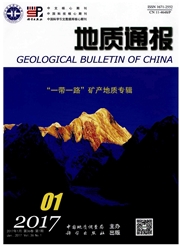

 中文摘要:
中文摘要:
运用多孔介质渗流理论和构造应力场驱动油气运移的流固耦合分析方法对柴达木盆地西部的构造应力场及流体运移势进行了数值模拟,揭示盆地西部油气运聚的规律是:①区域主要构造格架或构造体系控制了构造压力低值区的展布,二级构造压力低值区的边界为近南北和北北东向;②由浅层向深层,构造压力低值区的范围有逐渐扩大的趋势;③盆地西南部油区棋盘格式构造的结点为构造压力低值区;④不同构造层油气流矢量聚集区往往都是构造压力的低值区和油气聚集的有利部位。
 英文摘要:
英文摘要:
Numerical modeling of the tectonic stress and fluid migration potential fields in the western Qaidam basin carried out based on the theory of multi-pore media transfusion and a fluid-solid coupling analysis of the tectonic stress field driving petroleum migration gas reveals the following characteristics of petroleum migration and accumulation in this region: ① The main regional tectonic framework or tectonic system controls the distribution of low-tectonic pressure areas, resulting in the formation of nearly N-S- and NNE-striking boundaries of the second-order low-tectonic pressure areas; ② the low-tectonic pressure areas have a trend of enlarging progressively from the shallow to deep levels of the crust; ③ the nodes of the chessboard-type structures in the petroleum-bearing field of the southwestern Qaidam basin are low-tectonic pressure areas; and ④ The areas of oil-gas flow vector accumulation in various structural layers usually have low tectonic pressure values and therefore are favorable areas for petroleum migration and accumulation.
 同期刊论文项目
同期刊论文项目
 同项目期刊论文
同项目期刊论文
 期刊信息
期刊信息
